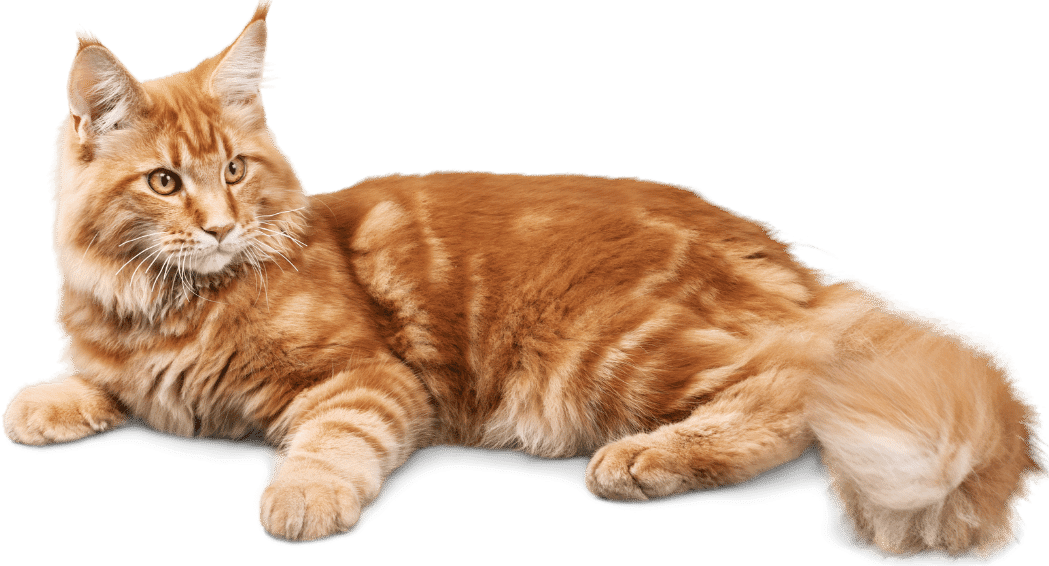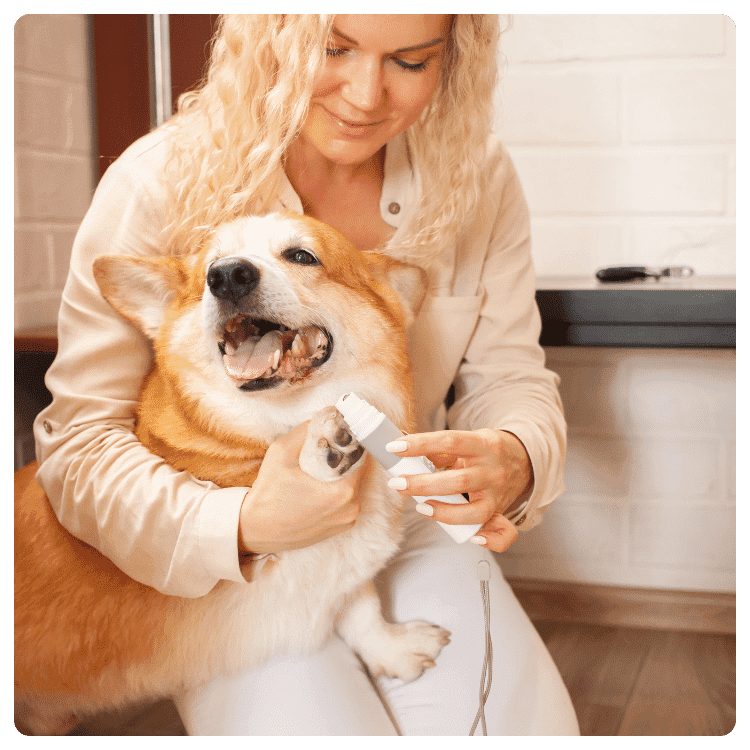Did you know that a simple task like regular nail trimming can significantly enhance your dog’s quality of life? Many dog owners overlook the importance of nail care, often until their pets show signs of discomfort or pain. However, maintaining a regular nail trimming routine is not just about aesthetics—it’s a vital component of your dog’s overall health and well-being.
This blog aims to explore why nail trimming is crucial for dogs, shedding light on the numerous health benefits it offers, the risks associated with neglect, and providing a comprehensive step-by-step guide on how to trim your dog’s nails safely and effectively at home.
The Anatomy of a Dog’s Nail
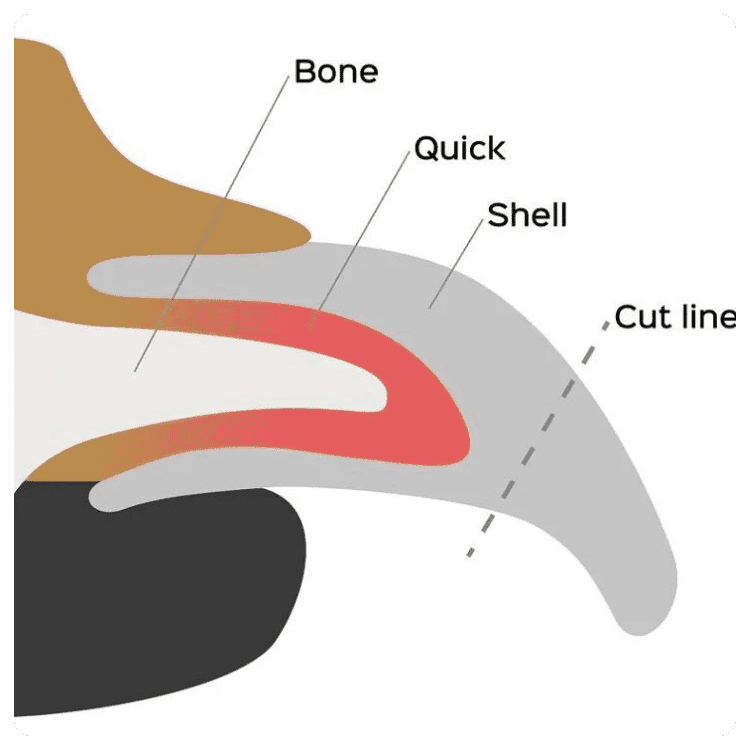
A dog’s nail is composed of two main parts: the keratin outer shell and the quick. The keratin outer shell is the hard, protective layer that we see and clip. It is made of a protein called keratin, which is also found in human hair and nails. Inside this keratin shell lies the quick, sensitive part of the nail that contains nerves and blood vessels. The quick is crucial for nail growth and nourishment but is also the reason why nail trimming must be done with care. Cutting into the quick can cause significant pain and bleeding for the dog.
Dog nails grow continuously, much like human fingernails, but their growth rate can vary based on several factors.
Activity level is a major determinant: dogs that frequently walk on hard surfaces like concrete tend to wear down their nails naturally, leading to slower growth. In contrast, dogs that spend most of their time indoors on soft surfaces or are less active may have faster nail growth due to a lack of natural wear and tear.
Breed and age also influence nail growth. Smaller breeds and puppies often have faster-growing nails compared to larger breeds and older dogs. Additionally, a dog’s diet and overall health play a role; a balanced diet rich in essential nutrients can promote healthy nail growth, while poor nutrition may lead to brittle and unhealthy nails.
Understanding the anatomy and growth patterns of your dog’s nails is crucial for effective nail care. Knowing where the quick is located helps in preventing painful accidents, and recognizing the factors that affect nail growth can guide you in establishing an appropriate trimming schedule. Regular observation and maintenance are key to ensuring your dog’s nails remain at a healthy length, contributing to their overall comfort and health.
Importance of Regular Nail Trimming
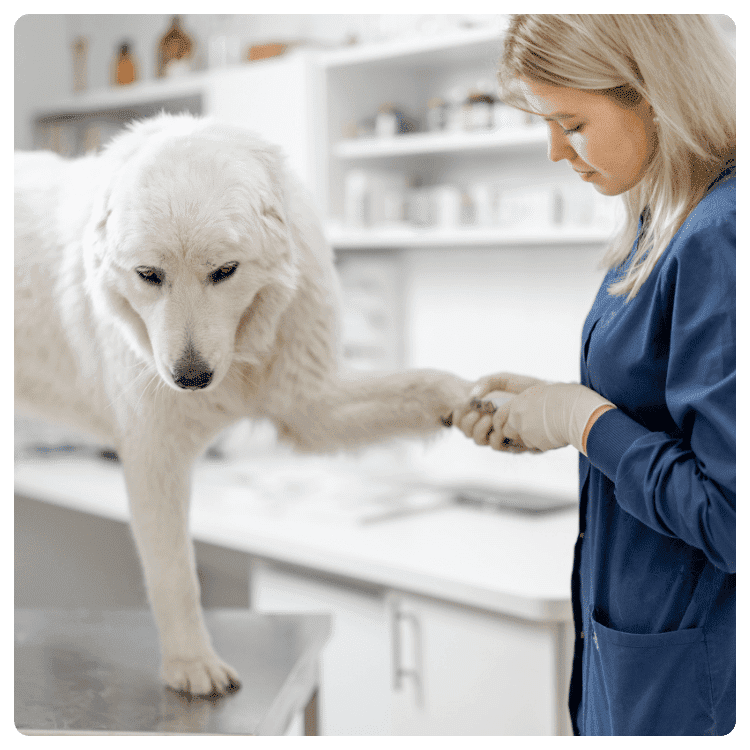
Health and Comfort: Long nails can cause significant discomfort and pain for dogs, severely affecting their ability to walk and run properly. When a dog's nails grow too long, they may press into the ground, causing the nail to push back into the nail bed. This pressure can lead to inflammation, pain, and even infections. The discomfort often forces dogs to adjust their walking posture, resulting in an unnatural gait. This altered movement can cause additional stress on their legs and joints, further exacerbating the pain and leading to long-term health issues.
Injury Prevention: Overgrown nails are prone to a variety of injuries. They can easily snag on carpets, furniture, or even during outdoor activities, leading to painful splits or breaks. When a nail splits or breaks, it can expose the quick, causing significant pain and bleeding. Such injuries are not only painful but can also lead to infections if not treated promptly and properly. Additionally, torn nails can sometimes necessitate veterinary intervention to prevent further complications. Regular trimming minimizes the risk of such injuries, keeping your dog safe and comfortable.
Posture and Joint Health: Long nails can negatively impact a dog's posture and overall joint health. As the nails grow longer, they can alter the way a dog stands and walks. This unnatural posture can put excessive strain on the joints, particularly those in the legs and spine. Over time, this strain can lead to chronic pain and conditions such as arthritis. Properly trimmed nails allow dogs to maintain a natural posture and gait, reducing the risk of joint-related issues and ensuring better overall mobility and health.
Behavioral Impact: The discomfort caused by long nails can also lead to noticeable behavioral changes in dogs. Dogs experiencing pain from overgrown nails may become reluctant to walk, run, or play, significantly impacting their overall quality of life. They might also display signs of anxiety or irritability, especially when their paws are touched. This reluctance to engage in physical activity can lead to weight gain and other health issues associated with a sedentary lifestyle. By keeping their nails properly trimmed, you can help ensure that your dog remains active, happy, and healthy.
Regular nail trimming is a simple yet crucial aspect of dog care. It not only prevents pain and injury but also promotes better posture, joint health, and overall well-being. By incorporating routine nail maintenance into your dog's grooming schedule, you can significantly enhance their quality of life and prevent a host of potential health problems.
Risks of Neglecting Nail Trimming
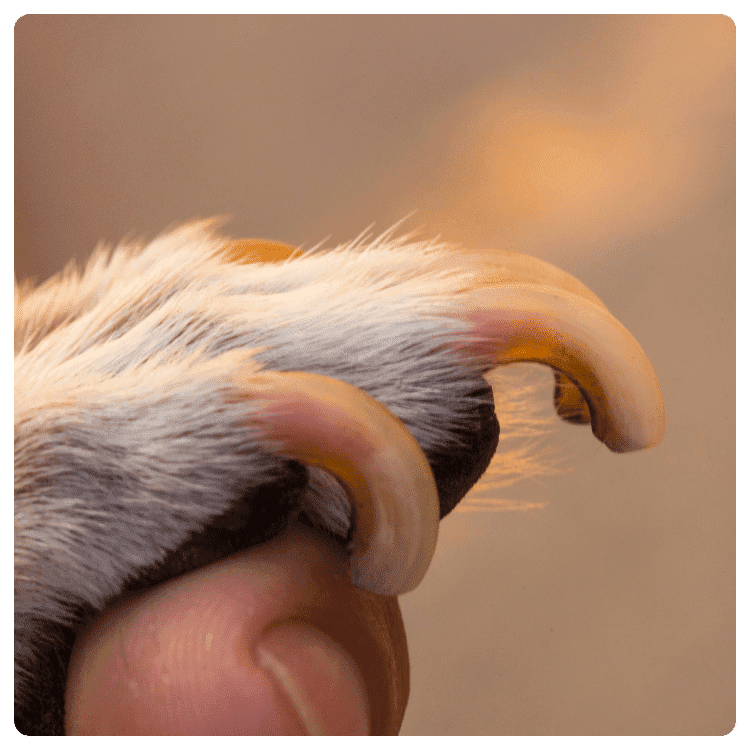
Physical Risks: Neglecting regular nail trimming can lead to several specific injuries and health problems. One common issue is the development of ingrown nails, where the nail curls and grows into the paw pad. This condition is incredibly painful and can cause significant inflammation, infection, and even abscesses. Overgrown nails are also more likely to split or break, which can expose the sensitive quick and lead to severe pain and bleeding. Furthermore, the constant pressure and unnatural angle of long nails can cause damage to the nail bed, leading to chronic pain and potential deformities.
Infections are another major risk associated with neglected nail trimming: When nails break or split, bacteria can enter through the damaged area, leading to infections that can spread to the toe and beyond. If not treated promptly, these infections can become severe and require antibiotics or even surgical intervention to resolve.
Long-Term Consequences: The long-term consequences of neglecting nail care can be quite serious. One significant issue is the development of arthritis or chronic pain due to the abnormal gait and posture that dogs adopt to cope with overgrown nails. This unnatural posture puts additional stress on the joints, particularly in the legs and spine, leading to inflammation and degenerative joint disease over time. Chronic pain from joint issues can severely diminish a dog's quality of life, making everyday activities like walking and playing difficult and painful.
Additionally, persistent discomfort from overgrown nails can lead to behavioral changes. Dogs may become less active, leading to weight gain and associated health problems such as diabetes and heart disease. The reduced activity can also contribute to muscle atrophy, further exacerbating mobility issues.
Emergency Situations: There are numerous emergency situations that can arise from neglected nails, necessitating immediate veterinary intervention. For example, a dog with excessively long nails might catch one on a piece of furniture or carpet, causing the nail to rip off entirely. This type of injury is not only excruciatingly painful but also results in significant bleeding and a high risk of infection. In some cases, the pain and trauma from such an injury can cause the dog to go into shock.
Another emergency scenario involves ingrown nails that have become severely infected. If an infection from an ingrown nail spreads, it can lead to systemic issues that require urgent medical treatment, including antibiotics and possibly surgery to remove the affected nail and treat the infection.
Benefits of Regular Nail Trimming
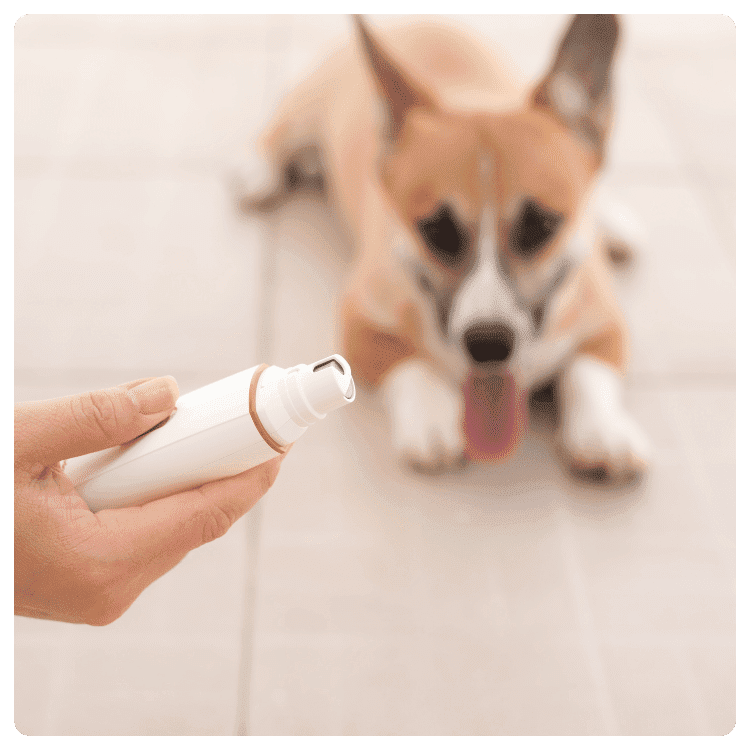
Enhanced Mobility: Regular nail trimming plays a vital role in enhancing a dog’s mobility and overall activity level. When nails are kept at an appropriate length, they don’t interfere with a dog’s natural gait or posture. This means that dogs can walk, run, and play more comfortably and efficiently. Properly trimmed nails prevent the nails from contacting the ground excessively, reducing the risk of discomfort and allowing for smoother movement. Dogs with well-maintained nails are more likely to engage in physical activities, promoting better cardiovascular health and overall fitness.
Prevention of Pain and Injury: One of the most significant benefits of regular nail trimming is the prevention of pain and potential injuries. Long nails can press into the paw pads or curl into the foot, causing discomfort and even leading to injuries such as splits, breaks, or ingrown nails. These injuries can be extremely painful and may require veterinary intervention to treat. By keeping nails trimmed to an appropriate length, you can significantly reduce the risk of such injuries, ensuring your dog remains comfortable and pain-free.
Better Hygiene: Regular nail care also contributes to better overall hygiene for your dog. Overgrown nails can trap dirt, debris, and bacteria, creating a breeding ground for infections. Additionally, nails that are too long can make it difficult for dogs to maintain proper paw hygiene, leading to the accumulation of dirt and grime between the toes. By keeping nails trimmed, you can minimize the risk of infections and promote cleaner, healthier paws.
Positive Behavioral Outcomes: Dogs with well-maintained nails tend to exhibit more positive behaviors due to increased comfort and reduced pain. When dogs are in pain or discomfort from overgrown nails, they may become irritable, anxious, or even aggressive. They may also show reluctance to engage in physical activities such as walking or playing. By keeping nails trimmed, you can alleviate discomfort and pain, leading to a happier, more relaxed demeanor. Dogs are more likely to enjoy interactions with their owners and other pets, leading to stronger bonds and a more harmonious household.
How to Trim Your Dog’s Nails at Home: A Step-by-Step Guide
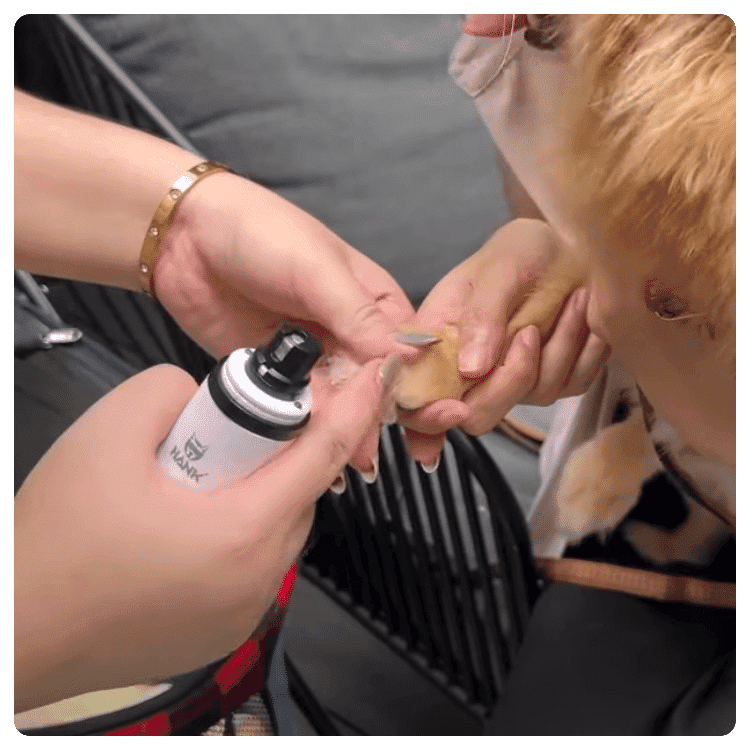
Preparation: Before you begin, gather all the necessary tools, including a pair of dog nail clippers, a dog claw trimmer, styptic powder (to stop bleeding in case of accidents), treats, and a towel or blanket to secure your dog. Choose a well-lit and quiet area for the trimming session to minimize distractions and ensure your dog feels comfortable.
Familiarization: To get your dog comfortable with the nail trimming process, start by regularly touching and handling their paws during cuddle sessions or playtime. Offer treats and praise to create positive associations with paw handling. Gradually introduce the nail clippers, allowing your dog to sniff and inspect them before using them for trimming.
Finding the Quick: The quick is the sensitive part of the nail that contains blood vessels and nerves. In dogs with light-colored nails, the quick is visible as a pinkish area within the nail. However, in dogs with dark-colored nails, it can be more challenging to identify. You can use Hank pet nail grinder that comes with a 2 LED light design, then shine an LED light through the nail to visualize the quick as a dark spot. Alternatively, trim small amounts of the nail at a time to avoid cutting into the quick.
Trimming Technique:
- Position your dog comfortably either on your lap or on a non-slip surface.
- Hold the paw firmly but gently, ensuring your dog feels secure.
- Identify the portion of the nail to be trimmed, aiming to cut just the tip.
- Using the nail clippers, make a swift, clean cut at a 45-degree angle. Avoid cutting too close to the quick or you can use Hank pet nail clipper that comes with safety guards that allow you to cut the nail without any deep cuts and prevent pain and bleeding.
- If you're unsure, err on the side of caution and trim less rather than more. You can always trim more later if needed.
Note - If your dog's nails are very long use a dog nail cutter first then use a dog nail grinder for perfect finishing.
Handling Accidents: If you accidentally cut the quick and cause bleeding, remain calm to avoid alarming your dog. Apply styptic powder directly to the nail tip to stop bleeding. If styptic powder is not available, you can use cornstarch or flour as alternatives. Apply gentle pressure to the nail with a clean cloth or tissue until the bleeding stops. Comfort your dog with soothing words and treats to reassure them.
Post-Trimming Care: After trimming, praise and reward your dog with treats and affectionate words to reinforce positive behavior. Make nail trimming a positive experience by associating it with rewards and praise. Take breaks if your dog becomes anxious or stressed, and always end the session on a positive note.
Why Trimming Your Dog Nail At Home Beats Professional Grooming?
Trimming your dog's nails at home can offer several advantages over relying solely on professional grooming services. Here's why nail trimming at home may be the preferred choice for many pet owners:
Convenience: One of the most significant benefits of trimming your dog's nails at home is the convenience it offers. With a set of nail clippers or a grinder readily available, you can address your pet's nail care needs whenever it's most convenient for you. There's no need to schedule appointments or travel to a groomer, making it easier to incorporate nail trimming into your regular grooming routine.
Cost Savings: Professional grooming services can be costly, especially if your dog requires frequent nail trims. By learning to trim your dog's nails at home, you can save money in the long run. While there may be an initial investment in purchasing grooming tools, the cost per trim is significantly lower than what you'd pay for professional services over time.
Familiar Environment: Grooming your dog at home allows them to remain in a familiar environment, which can help reduce stress and anxiety. Many dogs feel more comfortable being handled by their owners in the comfort of their own homes rather than in a grooming salon setting. This familiarity can lead to a more relaxed grooming experience for both you and your pet.
Flexibility and Control: When you trim your dog's nails at home, you have full control over the process. You can take your time and work at your own pace, ensuring a thorough and careful trim. Additionally, you can tailor the grooming experience to your dog's specific needs and preferences, making adjustments as necessary to accommodate their comfort level.
Bonding Opportunity: Grooming your dog at home provides an excellent opportunity to bond with your pet. It allows you to spend quality time together and strengthen your relationship through positive interactions. By engaging in regular grooming sessions, you can build trust and create a deeper connection with your furry friend.
While professional groomers certainly have their place, trimming your dog's nails at home can offer numerous benefits in terms of convenience, cost savings, comfort, control, and bonding opportunities. With a little practice and patience, many pet owners find that dog nail trimming becomes a simple and rewarding part of their pet care routine.
What Should I Choose Dog Nail grinder or Dog Nail Cutter?
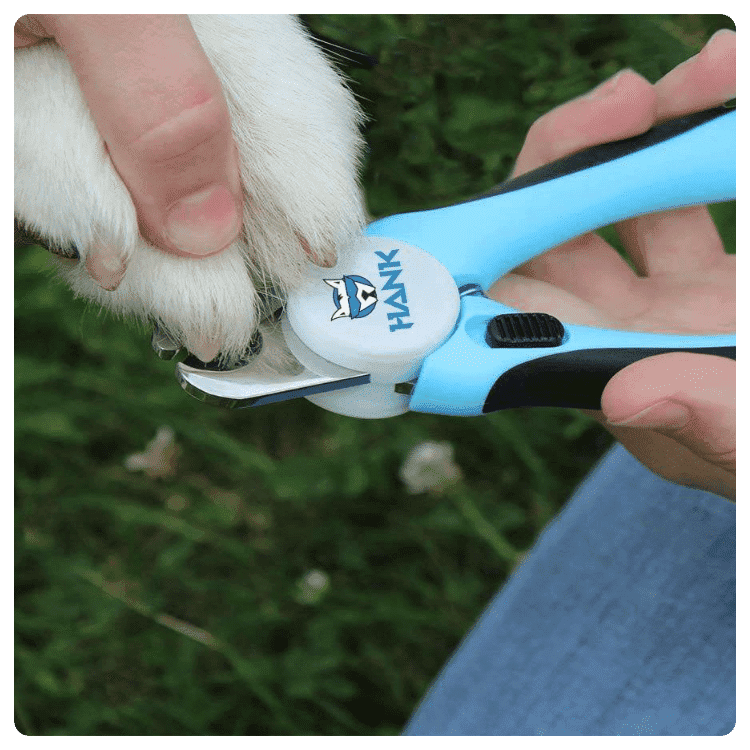
When it comes to choosing between a nail grinder and a nail cutter for your pet, both tools serve important purposes in maintaining your furry friend's nail health.
Nail Grinders: Nail grinders are electric tools that grind down your pet's nails gradually. They offer precise control over the amount of nail being removed, making them ideal for pets with thick or dark-colored nails. Grinders are particularly useful for rounding off sharp edges and smoothing rough surfaces, reducing the risk of accidental snags or splits. Additionally, grinders are less likely to cause discomfort or pain if the quick is accidentally nicked, making them suitable for pets with sensitive nails. Overall, nail grinders provide a gentle and gradual approach to nail maintenance, resulting in smoother and more polished nails.
Nail Cutters: Nail cutters, also known as clippers, are manual tools designed to trim your pet's nails in one clean cut. They offer quick and efficient nail trimming, making them suitable for pets with thinner or softer nails. Clippers are especially useful for removing overgrown nails and preventing them from snagging or causing discomfort. With proper technique, nail clippers can provide precise cuts that minimize the risk of splintering or cracking. While clippers may require a steady hand and confidence to use effectively, they are a straightforward and practical tool for maintaining your pet's nail length.
Choosing Between the Two: Ultimately, the choice between a nail grinder and a nail cutter depends on your pet's individual needs and preferences. Some pets may prefer the gradual approach of a grinder, while others may be more comfortable with the quick and efficient cuts of a clipper. Consider factors such as your pet's nail type, comfort level, and grooming routine when making your decision. Additionally, you may find that using both tools in combination provides the best results for keeping your pet's nails healthy and well-maintained.
Common Myths and Misconceptions
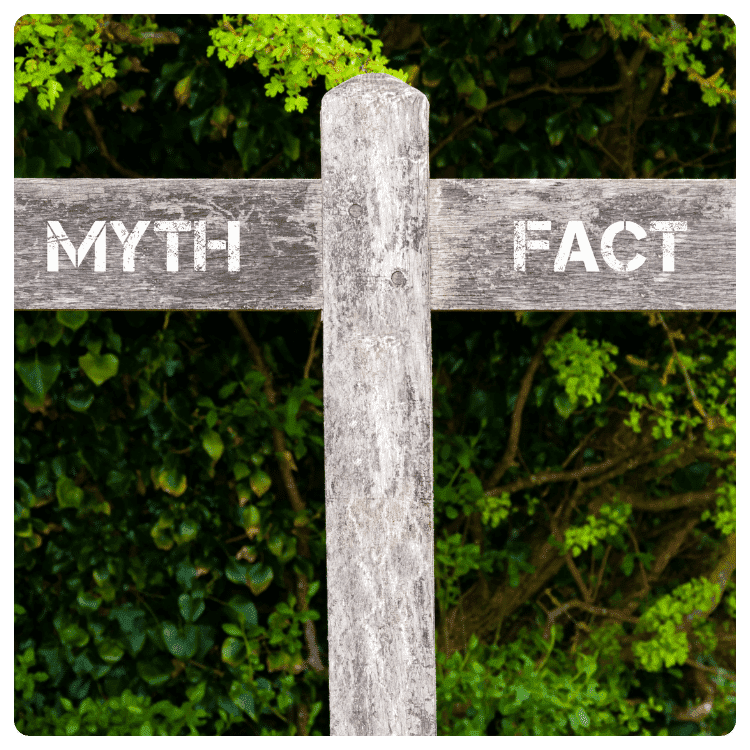
Myth Busting: There are several common myths surrounding dog nail trimming that can lead to misconceptions about proper nail care for our furry friends. One prevalent myth is the belief that dogs' nails don't need trimming if they walk a lot on the pavement. While it's true that walking on hard surfaces like pavement can naturally wear down a dog's nails to some extent, it's often not enough to keep them at an optimal length. Additionally, the wearing down process may not be evenly distributed among all nails, leading to uneven growth and potential issues.
Educated Choices: It's essential to encourage readers to make informed decisions about their pet's nail care based on facts rather than misconceptions. Regular nail trimming is a crucial aspect of dog grooming that helps maintain your pet's comfort, mobility, and overall health. By understanding the importance of proper nail care and debunking common myths, pet owners can take proactive steps to ensure their furry companions receive the care they need. Remember, when it comes to your pet's well-being, knowledge is power, and making educated choices can make all the difference in their health and happiness.
Conclusion
Regular nail trimming is not just about aesthetics; it's about ensuring your dog's comfort, mobility, and overall health. Overgrown nails can lead to pain, injuries, and even long-term health issues such as arthritis. By incorporating nail care into your grooming routine, you're taking proactive steps to keep your furry companion happy and healthy for years to come.
Frequently Asked Questions
The frequency of nail trimming depends on several factors, including your dog's activity level, nail growth rate, and the type of surface they walk on. In general, most dogs require nail trimming every 2-4 weeks. However, some dogs may need it more frequently, while others can go longer between trims.
Accidentally cutting the quick can cause bleeding and discomfort for your dog. If this happens, remain calm and apply styptic powder or cornstarch to the affected nail to stop the bleeding. Monitor the area for signs of infection and provide comfort to your dog. If bleeding persists or the wound appears severe, consult your veterinarian.
Getting your dog comfortable with nail trimming takes patience and positive reinforcement. Start by handling your dog's paws regularly and rewarding them with treats and praise. Gradually introduce the tools you'll use for trimming, allowing your dog to sniff and inspect them. Practice touching their nails with the tools without actually trimming to desensitize them to the sensation.
Nail grinders can be an excellent option for trimming your dog's nails, especially if you're concerned about cutting the quick or leaving sharp edges with traditional clippers. Here are some reasons why nail grinders can be beneficial:
Smooth Finish: Nail grinders gradually sand down the nail, resulting in a smoother finish compared to clippers, which may leave jagged edges.
Reduced Risk of Cutting the Quick: With nail grinders, you have more control over how much nail you're removing, reducing the risk of accidentally cutting the quick.
Suitable for Thick Nails: Grinders are particularly useful for dogs with thick nails, as they can effectively grind them down without crushing or splintering.
If your dog is anxious or fearful during nail trimming, take it slow and use positive reinforcement techniques. Offer plenty of treats and praise throughout the process to create a positive association. If necessary, consider seeking professional help from a groomer or veterinarian who can provide guidance and assistance.
Yes, there are alternatives to traditional nail trimming methods, including nail grinders and file boards. Nail grinders use a rotating abrasive surface to gradually grind down the nail, offering a smoother finish compared to clippers. File boards are abrasive boards that allow you to file down your dog's nails manually. Experiment with different methods to find the one that works best for you and your dog.
Long nails can cause discomfort and pose various health risks for your dog. Signs that your dog's nails are too long include clicking or tapping sounds when they walk, visible curling or hooking of the nails, reluctance to walk on hard surfaces, and redness or swelling around the nail bed. Regularly inspect your dog's nails and consult your veterinarian if you're unsure about their length.
Trimming dark-colored nails can be more challenging because the quick is not as visible. To avoid cutting the quick, trim small amounts of the nail at a time, gradually working your way back. Look for a slightly lighter area within the nail called the "whitish tip," which indicates where the quick ends. If you're unsure, consult a professional groomer or veterinarian for guidance.


